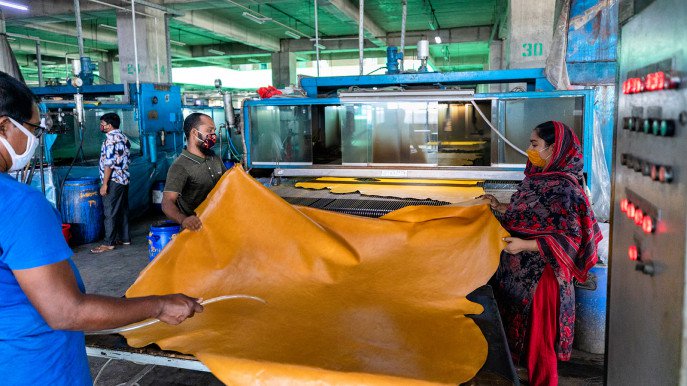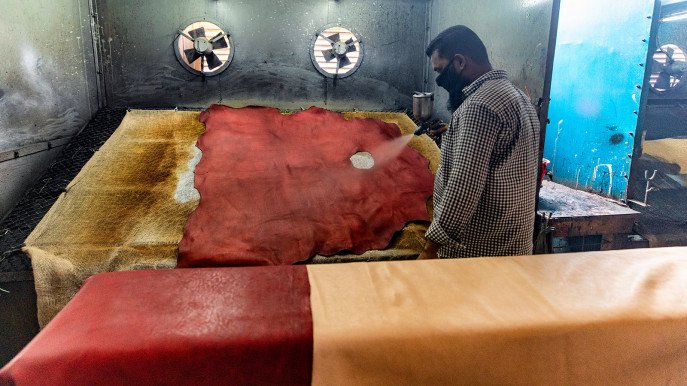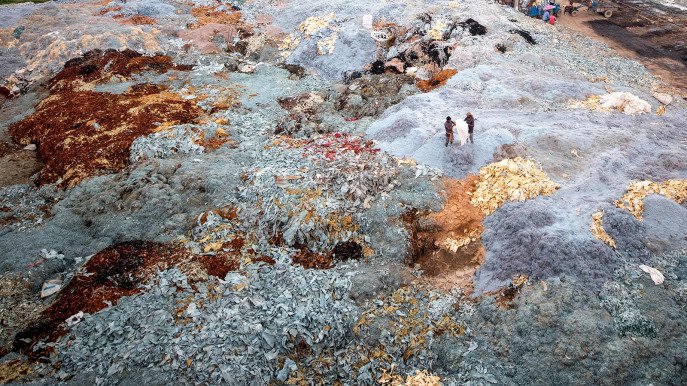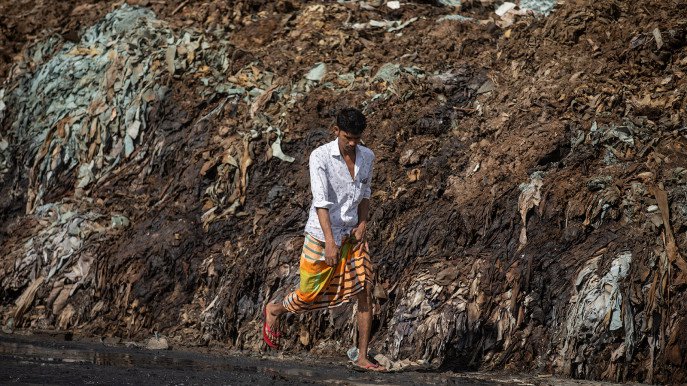‘The notion of leather tannery industrial estate is new in Bangladesh. We had to face several challenges in implementing the project,’ said Jitendra Nath Pal the former project director of BSCIC Tannery Industrial Estate
Challenges:
The notion of leather tannery industrial estate is new in Bangladesh. We had to face several challenges in implementing the project.
Complications in appointing contractors, non-inclusion of the central effluent treatment plant (CETP), frequent change in plans, and forced shifting of the tanneries into a half-complete project are some of the problems. The project however ended on 30 June of 2021 by overcoming all the problems.
One of the major problems in implementing the Savar tannery project was to appoint contractors which even led to litigations. At least two years passed in this process. The project was further delayed due to internal conflict among contractors although the work order was awarded jointly to Chinese contractors as well. The project also suffered due to partnership problems among contractors.
Although the project was completed within a short period after starting the work, much time was wasted in settling the cases and the problems of the contractors. Because the appointment of a new contractor could have taken more time causing further damages. That’s why the project was completed without excluding any of the previous contractors.
There were problems in appointing contractors as two companies were selected during primary scrutiny. But one of them filed a case when work order was awarded to the other. Their main allegation was that although they had legal documents, they did not get the job. Then the contractor was selected after the court issued an order. This process took away two years.
The land acquisition process was smooth with the help of the district administration. People gave their lands as they got a high price. All the lands were by the river bank where they could not grow any crop. All the lands in the surrounding areas have gained in value after the industrial estate was set up there.
Usually, economic activities increase when an industry is set up anywhere. In this case, the land price rose and people’s quality of life improved. If economic activities increase, the life of inhabitants in this area will improve further.
The government decided to shift the tannery from Hazaribagh in the backdrop of pollution of the Buriganga river by tannery wastes. The tanneries were moved to Savar by court order and issuing of compensation. The government gave them Tk260 crore as compensation money. About Tk22 crore is still left with the authority as many tanneries did not get the money due to the hard conditions of the government.
Many tannery owners have not paid the money for plot registration price which is determined as per square footage of land. There are complexities over the land price too. The CETP was not incorporated into the project at the beginning. The project cost became higher after incorporating the CETP. The land price also started fluctuating. The cost per square foot of land became Tk1700. But the government waived the CETP price as a grant to the tannery owners. The owners got 80% of the total project cost as a grant paying only 20% of the total cost. After the grant and compensation, the cost per square foot of land stood at Tk499. Only 10-12 of the tannery owners got registration until June 2021.

The CETP was incorporated in the primary plan of the industrial estate which BSCIC was not aware of, thus causing complexities. A general industrial estate that is set up by the BSCIC has roads, culverts, and electrical components. BSCIC has not done such a big project before. Also, they did not have the experience.
In the Savar tannery estate case, the primary plan was that the tannery owners would set up the effluent treatment plant (ETP) on their own. The decision was changed later when the authorities figured that many of the industries will not set up ETP. The standard will not be good if too many ETPs are set up which will ultimately pollute the environment. That’s why the CETP concept was added so that no untreated waste is drained. All the waste will go to the river after being treated at the CETP.
There is much discussion on the river and environmental pollution. But all the discussions are not accurate. That’s why we have decided to organize a field trip for the journalists to the industrial estate. Many of them are saying that pollution is taking place seeing it on their own while many are saying without seeing it.
But the situation has improved almost 90% from the previous state. There will remain some gaps as the concept of a tannery estate is new in Bangladesh.
Many people are criticizing the tannery industrial estate for pollution upon reading newspapers or based on rumors. We want to show the journalists that the condition has improved much after installing the CETP. Their news reports based on the actual scenario after the field trip will help the leather industry.

One negative report harms the export market. Because the buyers do not want to procure after seeing negative media reports. Journalists should publish the facts but one false information may damage the market. The real scenario is not the same as the newspaper reports are stating.
Recently, a recommendation was made to close the tanneries. I suggest one observe the state of environmental pollution by closing the tanneries only for four days, not permanently. Every waste from the tanneries is drained out after being treated 95% if not 100%. This has kept the environment pollution-free. If the waste is not treated, the impact will be apparent on the country’s overall environment.
Many people are saying that the tannery industrial estate is polluting the river. But if you test the water samples from upstream and downstream, one can ascertain that pollution is not happening due to the tanneries. Water from the upstream comes polluted with various industrial waste. If you take the water sample from the upstream there is no major difference in quality. However, the quality of the water downstream is good because of the treatment. There are test reports of water quality for every month. But these cannot be shown to all. The criticism on river pollution is taking place randomly and unjustly.
One of the components of tannery waste is salt that cannot be treated. Some salt residue remains in the water which is not that harmful. The polluted water of the tannery is not drained to the river. Bangladesh University of Engineering and Technology (BUET) is the consultant of the tannery industrial estate which tests the water quality regularly. The report on the water quality is good. Test reports from the third party on the water quality are also good.

Solid waste management is still relatively weak. There are no worries regarding water although excess waste is generated during Eid-ul Adha. Still, that is not a problem. Also, the machinery of the CETP is in good condition. There was a defect after running the machine for five years, which was repaired. Earlier, a bad odor could be smelled from one mile away which is no more the situation.
About 100 tonnes of solid waste comes daily. One dumping yard cannot solve this problem. Only the production of by-products from the waste can solve the problem. That’s why the government has initiated implementing a second project. A plan has been submitted to the planning commission to establish a new industrial estate here. The project work will start after the feasibility study.
Those industries which will use solid waste as raw materials will get priority in the new project. We are working on how to convert solid waste into wealth. The process of agreement signing with an Italian company is underway. They will export fertilizer produced from the waste. An MoU will be signed after scrutiny. I am hopeful that the tannery industrial estate will be an environmentally-friendly one.
Lessons:
The tannery industrial estate was established after overcoming many challenges. All the tanneries were forced to move to Savar after the order of the High Court and in a half-done project. There was a challenge in starting the operation before the completion of the project.
Our lesson is we should not start the operation of any electro-mechanical project before completion. The tanneries should have been shifted after the completion of the project. There should be a trial run for any electro-mechanical project after its completion. The final decision for starting the operation can be taken after the trial. We faced more problems as it started operation in a half-completed project.

There should be several other leather tannery industrial estates. We should undertake more projects keeping in mind the lessons. The capacity of the CETP is 25000 cubic meters. After the Eid-ul-Adha and three months onwards, the amount of waste becomes 40,000 cubic meters. The total volume of waste cannot be treated in this facility. The CETP’s capacity should be increased from the present one. The projects should be undertaken with a duration of 50 to 60 years. The treatment process will not be hampered if the water amount increases. We have to plan considering the volume of waste to be generated in the next 100 years.
















